
A New Big Museum of Modern Art in Techbro Central
Recently the San Francisco Museum of Modern Art reopened after a period of renovation and expansion lasting about three years, adding almost three times as much exhibition space to its former building and making it one of the biggest museums for modern art in the USA. The extension by Snøhetta architects was realized with the financial support of Doris and Donald Fisher, whose collection of contemporary art will be on loan to SFMOMA for the next 100 years and features prominently over three of the seven floors of the building. The Fisher Collection is displayed in thematic exhibitions, each with a separate title and theme such as “Approaching American Abstraction”, “British Sculptors”, “Pop, Minimal, and Figurative Art” or “German Art after 1960”, and contains a lot of what Carolina A. Miranda in Los Angeles Times calls “dude art”. In The New York Times, Roberta Smith is charmed by the museum’s new building, but describes the Fisher collection as having an “unalloyed mainstream focus”, and reminds the museum that “diversity … remains its big challenge”.
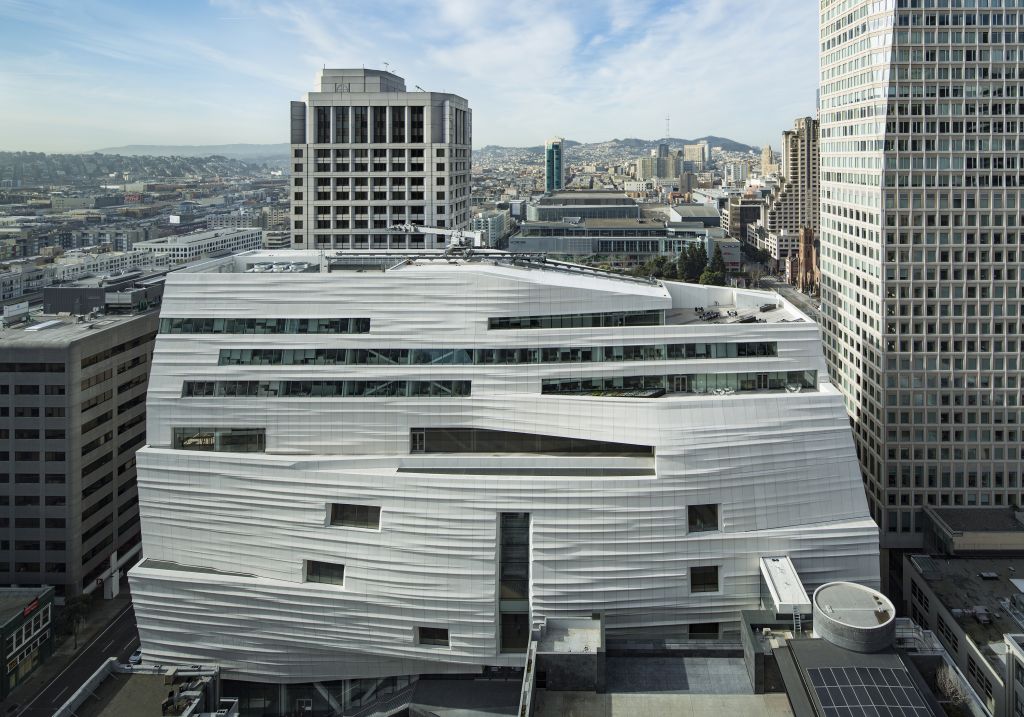
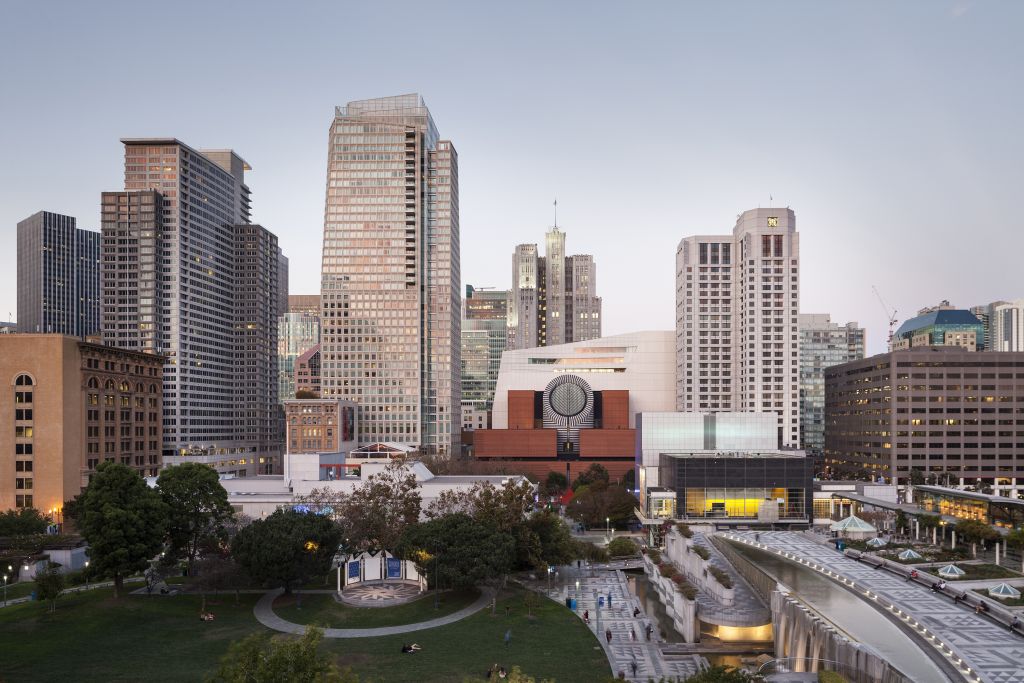
I agree with these views on the Fisher collection, but also think the writer’s focus on the art collection draws too much attention away from highlights of the new SFMOMA such as the thrilling exhibition About Time: Photography in a Moment of Change in the John and Lisa Pritzker Center for Photography, and Typeface to Interface: Graphic Design from the Collection, an informative graphic design display on the 6th floor.

Miranda and Smith aren’t the only critics who rightly pointed out that an overwhelming number of works in the Fisher Collection were produced by white male artists such as Chuck Close, Ellsworth Kelly and Richard Serra. Most present, however, is Gerhard Richter. I have not seen so much of his work in one place since his solo exhibition in the Centre Pompidou in 2012. The presence of “the most expensive European artist” says a lot about the collectors’ taste and their power over what SFMOMA presents to its public as important contemporary art.
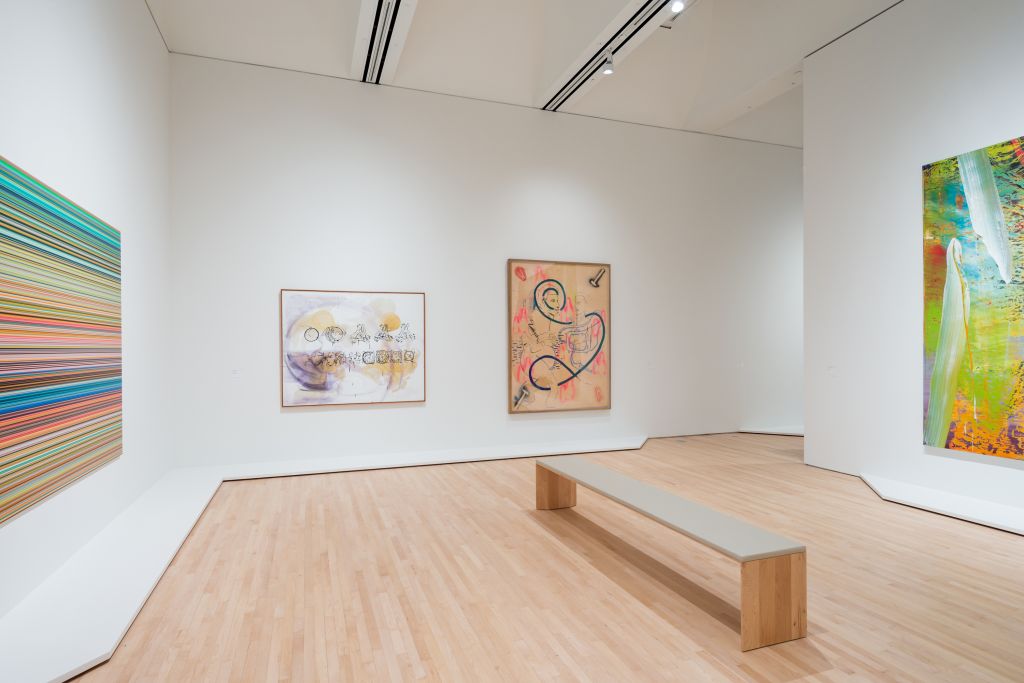
The only woman featured in the extensive exhibition called “German Art after 1960” is Hilla Becher, the collaborating partner and wife of Bernd Becher. Really important German artists such as Rosemarie Trockel or Isa Genzken are absent. The Fisher Collection lacks American women artists too, and it is oblivious to the art of Afro-Americans or the work of non-Western contemporaries. To short, the collection is as Eurocentric as most modern art museum collections in the West were until about the 1990s.
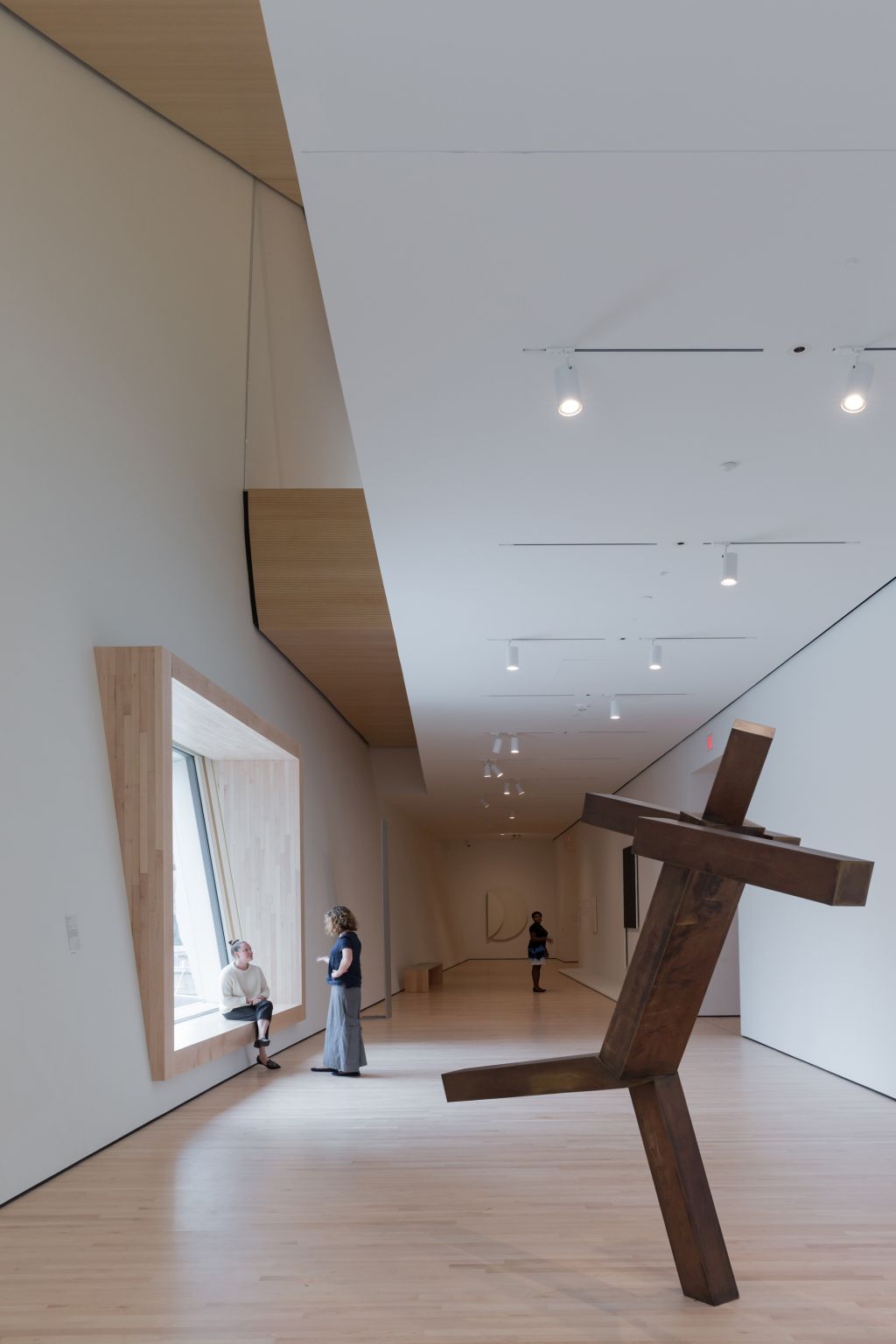
What applies to the contemporary art displays from the Fisher collection, however, is not applicable to the photography exhibition About Time, where curators seemed to have gotten more freedom to work creatively with the treasures that the collection holds. The main theme of the exhibition, is time in relation to photography, which is a subject broad enough to be divided into subthemes that are individually addressed in the eight exhibition rooms. One enters the exhibition through the room entitled “Secure the Shadow”, which focuses on the “impulse to preserve” out of which photography emerged in the 19th century. Upon entering the room, it becomes clear that the story of photography is not told in a linear chronological way. Early daguerreotype portraits of a dead man and a dead child made by unknown photographers as mementos for the bereaved, are combined with Five Sheets of Thin Paper (2012) by Phil Chang, a work consisting of unfixed photo paper on which the recognizable images over time turn into a monochrome, because of the exposure to light. What the first room seems to address is the evanescence of life and the transformation of materials over time, processes that usually escape human control.
About Time is a brilliant deep photography exhibition in a city that has a taste for deep data
Nevertheless, photographers intervene in these processes and sometime score a meaningful success, as the “Decisive Moments” room depicts. There is a selection of “stop-action pictures” including sheets from the Animal Locomotion (1897) series by Eadweard Muybridge, Murray Becker’s Crash of the Hindenburg (1937) and Paul Graham’s Fulton Street, 11th November 2009, 11.29.10 a.m. (2009). “Decisive Moments” illuminates the role of photography as a medium of documentation, and at the same time stimulates reflection on the medium’s relation to truth. To photographers like Muybridge and Étienne-Jules Marey photography was in first instance a method by means of which the human sense of seeing could be analyzed. In Becker’s Crash of the Hindenburg, the properties of the medium as a historical document come to the fore: even though the photo depicts the accident, it does not show its cause. Graham’s two photographs of a street scene also play with our expectations of the photograph as a document. One is a picture of a woman and several man walking down the street apparently not seeing each other. The other one, shows the woman fallen on the sidewalk and one of the passersby putting out a hand to help her getting up. According to the title, both photos are snapshots, taken in the same second, but unlike the Hindenburg explosion, they could also have been staged. Aren’t they actually too good to be true?
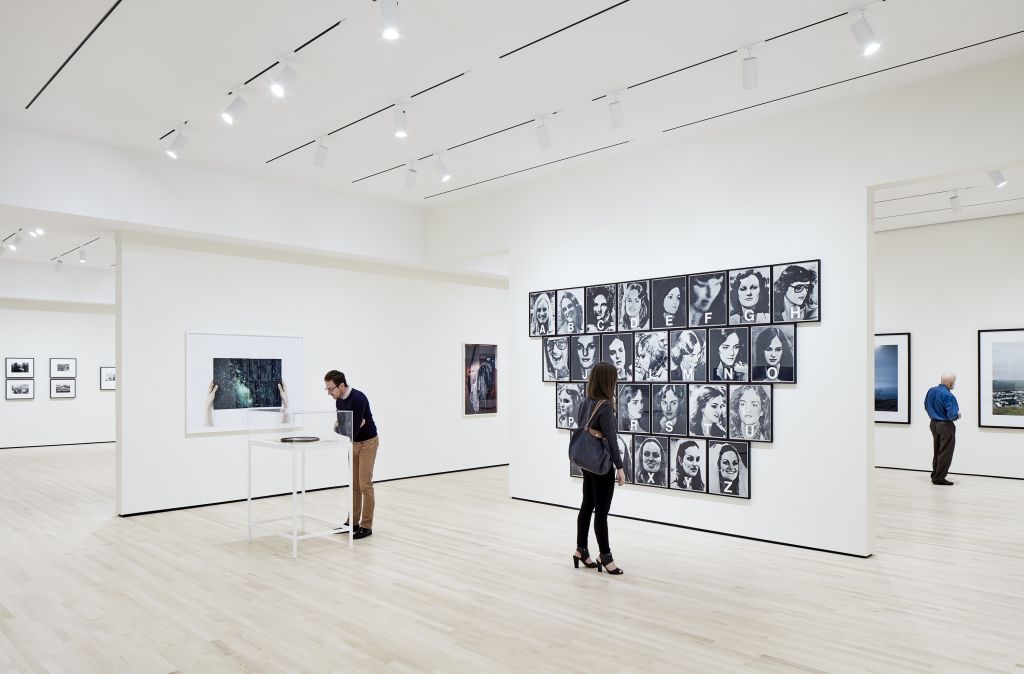
In the following rooms (with titles such as “As Time Marches On”, “While it Lasts”, “Then and Now” and “Memento Mori”) the work of photographers is mixed with photographic work by artists such as Sam Taylor-Wood, John Baldessari or Zoe Lennard. The selection of works on display includes many references to social history and its connection with the present, which gives the exhibition a certain authenticity, a feeling of what we see there in the museum is relevant outside of its walls as well. Take for instance Dawoud Bay’s photographs Betty Selvage and Faith Speights (2012) from his series the Birmingham Project, which he initiated in commemoration of the 16th Street Baptist Church bombing in Birmingham, Alabama in 1963. One of Bay’s portraits is of a girl who is of the same age as the girls that were tragically killed during the bombings. The other one is of a woman of the age the girls would have been in 2012. Dawoud’s photographs remind me of the situation on Mission Street, where many homeless black people make contemporary segregation in San Francisco visible to anyone who pays attention. In April 2016, Scott Glover and Dan Simon reported for CNN about racism in the San Francisco Police Department, writing that San Francisco District Attorney George Gascon “likened the leadership of the department’s union to police in Alabama and Mississippi in the 1950s.”
“About Time” is an important exhibition with an astonishing selection of photographs each one of which has rich and complex stories to tell. It speaks to a diverse audience about photography and its relation to time. Ending with Northern American land- and cityscapes shot in the 19th century and photos of US invasions in the Middle East, it shows how the country has changed under the influence of advanced capitalism. While the contemporary art section turns a blind eye to the social and political issues that are crucial to artists just as well as to most other people, the photography department put a spot light on them. Thus, About Time becomes a brilliant deep photography exhibition in a city that has a taste for deep data.
The relevance of technology to San Francisco is also emphasized through Typeface to Interface: Graphic Design from the Collection, which traces key developments within the field of graphic design from the 1950s to the beginning of the 21st century, from typewriter to mobile phone screen and further. Where else would an exhibition like this one be more site-specific than in California, where the US-American tech industry has its headquarters? Yet, the local artists and designers I spoke to were rather skeptical about it, telling me that they see “Typeface to Interface” as bait with which the museum tries to lure techbros inside. In San Francisco techbros and artists usually don’t think much of each other. This is not at all an aversion to technology and its creative use from the artist’s side, but an aversion to the effects of the techbro presence, for instance on local rents. People working in the industry can afford the high prices asked by landlords for housing in San Francisco; most Bay Area artists, like any person with an average income, simply can’t.
All images courtesy SFMOMA
More information on the exhibitions: here
Kerstin Winking


